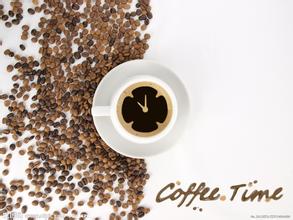Indonesian Coffee Flavor and Taste Manor production area introduces Rasuna Wahana Manor
Unlike the water-washing and pressurized treatment commonly used in Indonesia, the coffee at WAHANA Manor is fully washed-using a new pulp removal machine. The machine, installed in 2009, can handle 25 tons of ripe coffee cherries per hour. Coffee cherries are picked when they are fully ripe, and processed raw coffee beans are sorted and graded by hand. In addition, WAHANA Manor is now promoting raw coffee beans treated in the sun. Like this one, 100%Rasuna Solar WAHANA Manor is still a relatively young estate that continues to grow year by year. The estate covers an area of 500 hectares. The owner of the estate plans to expand the coffee planting area of the estate as much as possible in the next few years. A large part of WAHANA Manor is a protected forest cover, which includes many native plant and tree species around valleys and rivers. Another 30 hectares of the estate is used for coffee breeding to increase the yield of individual coffee grown on a large area. The new seedlings will be cultivated in a sandy bed for 3 months and then transferred to a plastic bag for 7-8 months. After that, the coffee seedlings were planted in a divided planting area and carefully marked to identify the variety Rasuna as a hybrid of Catimor and Typica, an endemic tree grown only in Indonesia, mainly in Sumatra.
It combines the advantages of a high-yielding Catimor variety with a longer-lived Typica variety. (Catimor has been widely planted in Indonesia, but its yield will decline significantly when the coffee tree grows to 10 years. ). The leaves of this species are very small and rectangular, and only about 150 grams of coffee beans can be extracted from the excreta of civets, which will cause 20% loss in the roasting process. Due to the unique raw materials and production process, this kind of coffee can be said to be very rare. The global supply of coffee beans is no more than 400 kilograms a year.
3. Traditionally, coffee fruits are washed or sun-treated to remove excess parts and remove coffee beans. However, Luwak obtains coffee beans by using its natural fermentation in civets, so it has a unique flavor. M.P. Mountanos, which first introduced Kopi Luwak coffee to the United States, pointed out that it was not taken seriously when I heard that this kind of internal fermented coffee was a joke of the industry. Later, when I saw a special report on Kopi Luwak in National Geographic, I became interested in her. it took seven years to find a stable source of supply and began to introduce a small amount to the United States. What's the flavor of this coffee? Generally speaking, Indonesian coffee has the taste of mud and traditional Chinese medicine, and its consistency is the highest in all continents, but Kopi Luwak has a stronger taste and consistency, which is almost close to syrup, and its flavor is very special. If you don't like Indonesian coffee in the first place, you must hate Kopi Luwak even more. If you prefer the fishy smell of aged beans, you may love this alternative coffee. Experts who have tasted Kopi Luwak have put forward a polarized evaluation, and some people compare it to the best coffee in the world. Although it is the best, whether you are willing to spend thousands of yuan to drink a cup of Kopi Luwak is your personal preference.

Important Notice :
前街咖啡 FrontStreet Coffee has moved to new addredd:
FrontStreet Coffee Address: 315,Donghua East Road,GuangZhou
Tel:020 38364473
- Prev

Introduction to the origin of Arabica coffee beans introduction to Arabica Coffee Manor
Arabica coffee accounts for 75%, 80%, and its excellent flavor and aroma make it the only coffee that can be drunk directly among these native species. But its resistance to dryness, frost, diseases and insect pests is low, especially the natural enemy of coffee leaf rust, so the producing countries are committed to variety improvement. Sley.
- Next

Introduction to the coffee flavor of Santa Barara Manor in Honduras with rich and unique aroma.
Medium or shallow acidity, giving the impression of obvious but not strong. Sometimes it has a beautiful floral or fruity aroma (generally speaking, beans produced in different regions and at different elevations have different performances). It is not at all associated with the unrest of the country. Bitterness and obvious sweetness. The overall taste of Honduran coffee is balanced, sour and bitter are not so strong, between the two
Related
- Does Rose Summer choose Blue, Green or Red? Detailed explanation of Rose Summer Coffee plots and Classification in Panamanian Jade Manor
- What is the difference between the origin, producing area, processing plant, cooperative and manor of coffee beans?
- How fine does the espresso powder fit? how to grind the espresso?
- Sca coffee roasting degree color card coffee roasting degree 8 roasting color values what do you mean?
- The practice of lattes: how to make lattes at home
- Introduction to Indonesian Fine Coffee beans-- Java Coffee producing area of Indonesian Arabica Coffee
- How much will the flavor of light and medium roasted rose summer be expressed? What baking level is rose summer suitable for?
- Introduction to the characteristics of washing, sun-drying or wet-planing coffee commonly used in Mantenin, Indonesia
- Price characteristics of Arabica Coffee Bean Starbucks introduction to Manning Coffee Bean Taste producing area Variety Manor
- What is the authentic Yega flavor? What are the flavor characteristics of the really excellent Yejasuffi coffee beans?

